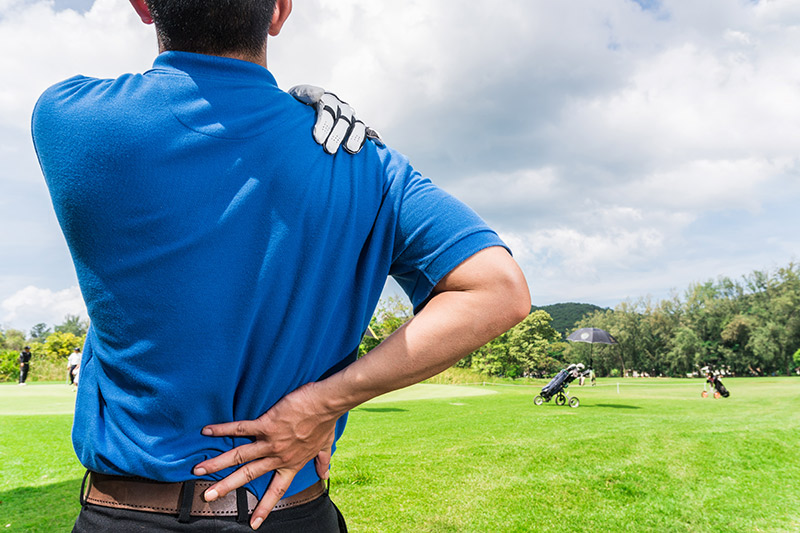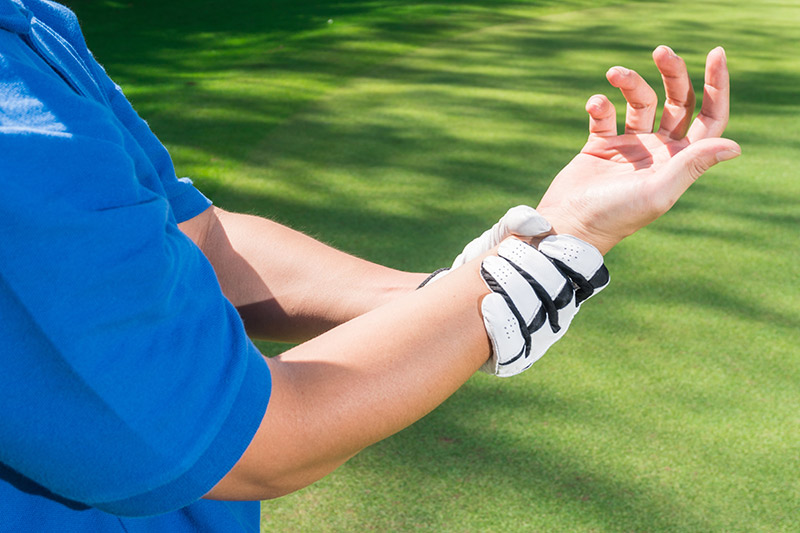
Arizona is home to over 300 traditional and challenging golf courses. It is no wonder that people flock here to enjoy a round or two of golf in some of the country’s best winter weather. Whether you have the privilege to live in this great state or swing by occasionally for a visit, the last thing you want to take with you to the golf course is pain.
Many golfers unfortunately do suffer from mild to moderate pain. If this sounds like you and you continue to golf through it, you could be forced to leave the green altogether. Minor injuries and pain often lead to bigger problems. If you want to stay on the golf course, then you should focus on staying on the course with pain treatment. It’s time to see what pain is preventing you from golfing to your max and what you can do about it.
1. Lower Back
Millions of Americans struggle with lower back pain and golfers are no stranger to it as well. When you experience lower back pain, it can be a huge pain for your golf swing as well. The motion of the golf swing includes rotation of the pelvis producing a torque between your lumbar spine and pelvis. During the swing, you will experience pulling on the ligaments, tendons and muscles of your lower back, especially when going for a power swing.
If your case is more serious, you may even be beginning to wear down the discs between your vertebrae and lumbar spine. This will lead to disc disease and in some cases, the end of your golfing legacy.
Prevention:
You might need to sacrifice power for reduced pain. The key to lower back injury prevention lies in uniting the rotation of your pelvis and trunk, especially on your downswing. You might have been taught to separate the movement to gain power, but you’d also be sacrificing your back doing this. If you want to stay in the game, give up some power a keep your back healthy.
2. Shoulder
Many sports lead to a higher risk of shoulder injury and the same holds true for golf. Many athletes end up with a rotator cuff injury that can become extremely painful and hard to recover from. The rotator cuff is comprised of muscles and tendons surrounding the shoulder joint. When you repeatedly swing the golf club, especially incorrectly, you place a lot of stress on the shoulder joint. This can cause a tear in your rotator cuff.
Another possible golfing injury is a labral tear or torn cartilage. Around the shoulder socket is a firm piece of tissue called the labrum which helps to keep your arm in your shoulder socket. Golf swings unfortunately have a habit of tearing this cartilage as well.
Prevention:
A key to prevention of a shoulder injury in your golf swing is with regard to turning. Once you master turning your upper body correctly, you’ll decrease the chances of tearing up your shoulder. If you are not turning correctly, you’ll notice your left arm pinned across your chest. Remember to use your arms as a pendulum and swing more with them than the muscles in your shoulder. In the swing, once your body stops rotating then your swing should stop too.

3. Elbow
Tennis elbow is not just for tennis players. Golfers also suffer from this injury. This condition is technically called lateral epicondylitis, and happens in golf because your extensor tendons become inflamed due the constant impact of the outside elbow during the golf swing. You’ll feel pain and tenderness on the outside of your elbow if you’ve suffered from tennis elbow.
Prevention:
Preventing tennis elbow will amount to how you use your elbow during your swing to eliminate further damage. While your lead arm should remain straight, it should not be locked during your swing. You arm should be straight and relaxed at the same time. During your downswing, you’ll notice that your arm will automatically become straight because of the momentum. Locking your arm will increase your odds of adding tennis elbow to your problem list.
Bottom Line
Your end game is to always make it to the end of your game as injury free and pain free as possible. You need to identify your trouble areas first and make corrections when physically possible. When the pain and discomfort cannot be tolerated any longer, you might need to visit with a pain specialist. Give us a call to discuss a treatment plan that will get you back out on the golf course in no time. (623) 776-8686
Comments are closed.
